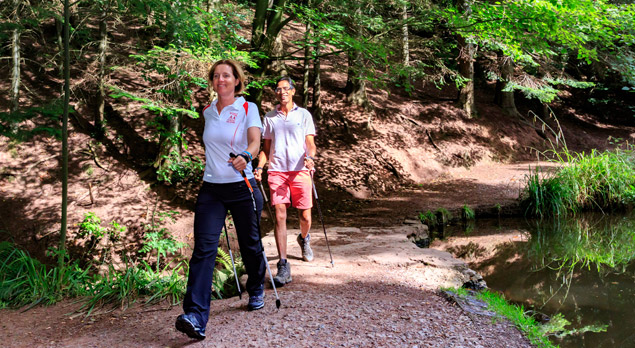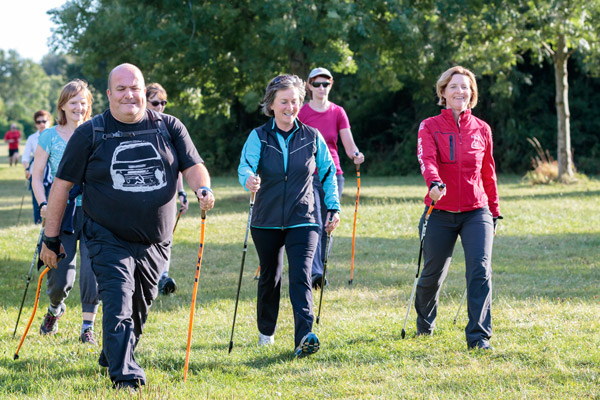A Beginners Guide To Nordic Walking

Words by: Vicky Welsh
If you like walking or exercising outside then you have probably heard of Nordic walking. This fitness activity derives from Nordic skiing and came about in the 1930s, Finland, when competitive cross-country skiers started using their poles during summer training, and saw results. Just like its winter counterpart, Nordic walking is a powerful whole body exercise which activates your core stabilising muscles and increases heart and lung activity.
In this article International Nordic Walking Federation instructor, Vicky Welsh, explains more about the sport.
Deemed a health sport (because of its cross-over between health and fitness) it came to this country in 2004 and has been growing steadily in popularity ever since. One of the best things I’ve noticed is how much my general walking speed and stamina has increased since Nordic walking. It’s taught me how to use my muscles more efficiently and with better posture.
What is Nordic Walking?
Nordic walking is based entirely on your natural walking pattern but uses two specially designed poles angled backwards to help build your upper body strength and accelerate you forwards.
People often think that Nordic walking and trekking are similar but this is a mistake. Trekking poles are used mainly for support and stability whilst Nordic walking poles are a fitness tool which takes walking to a higher level. Angling the poles backwards instantly improves your posture and the technique of gently rotating your upper body as you push forwards greatly benefits your back.
The poles themselves are generally lighter than trekking poles and instead of a chunky handle with a loop strap, Nordic walking poles have a glove-type strap which clips in to a slender, ergonomic handle. This allows for a fuller arm swing and greater acceleration as you can push the pole way behind your body, letting go with your hand and powering through the strap.
![]()
Kit

Other than the poles themselves, no specialist kit is required to Nordic walk. However it’s worth investing in some well-fitting walking shoes or boots with a flexible sole. My personal favourites are the Women's Scarpa Terra for winter walking and the Salomon X Ultra 2 GTX during the drier months. Both are waterproof and pliable and I can achieve an excellent heel/toe roll, an important part of the technique.
Of course the more regularly you walk the more you appreciate good kit. I’m particularly pleased with my latest acquisition - a Mountain Equipment Firefox waterproof. It’s light, highly breathable and I can roll it small to fit in my backpack. Breathability is key as Nordic walking is quite energetic. Wicking fabrics and layering are my recommendations when people ask.
![]()
Benefits
The benefits of exercising outdoors are well documented. Besides acting as an anti-depressant Nordic walking, when done properly, can burn up to 46% more calories than regular walking and is a complete upper and lower body workout, using 90% of the body’s muscles.
With good tuition you can expect to see positive changes in your posture, back health, joints and all over muscle tone, especially in your arms and waist. It’s an exercise you can do for the rest of your life and the travel poles collapse so neatly you can take them anywhere you go.
To find an instructor near you visit British Nordic Walking or Nordic Walking UK.
![]()
 |
|
About the Author:Vicky Welsh - Nordic walking instructorVicky Welsh is an International Nordic Walking Federation instructor. She founded Bristol Nordic Walking in 2010, one of the biggest Nordic walking centres in the UK and is a regular blogger and writer on Nordic walking. She is also the current British Nordic Walking half marathon national champion. |






